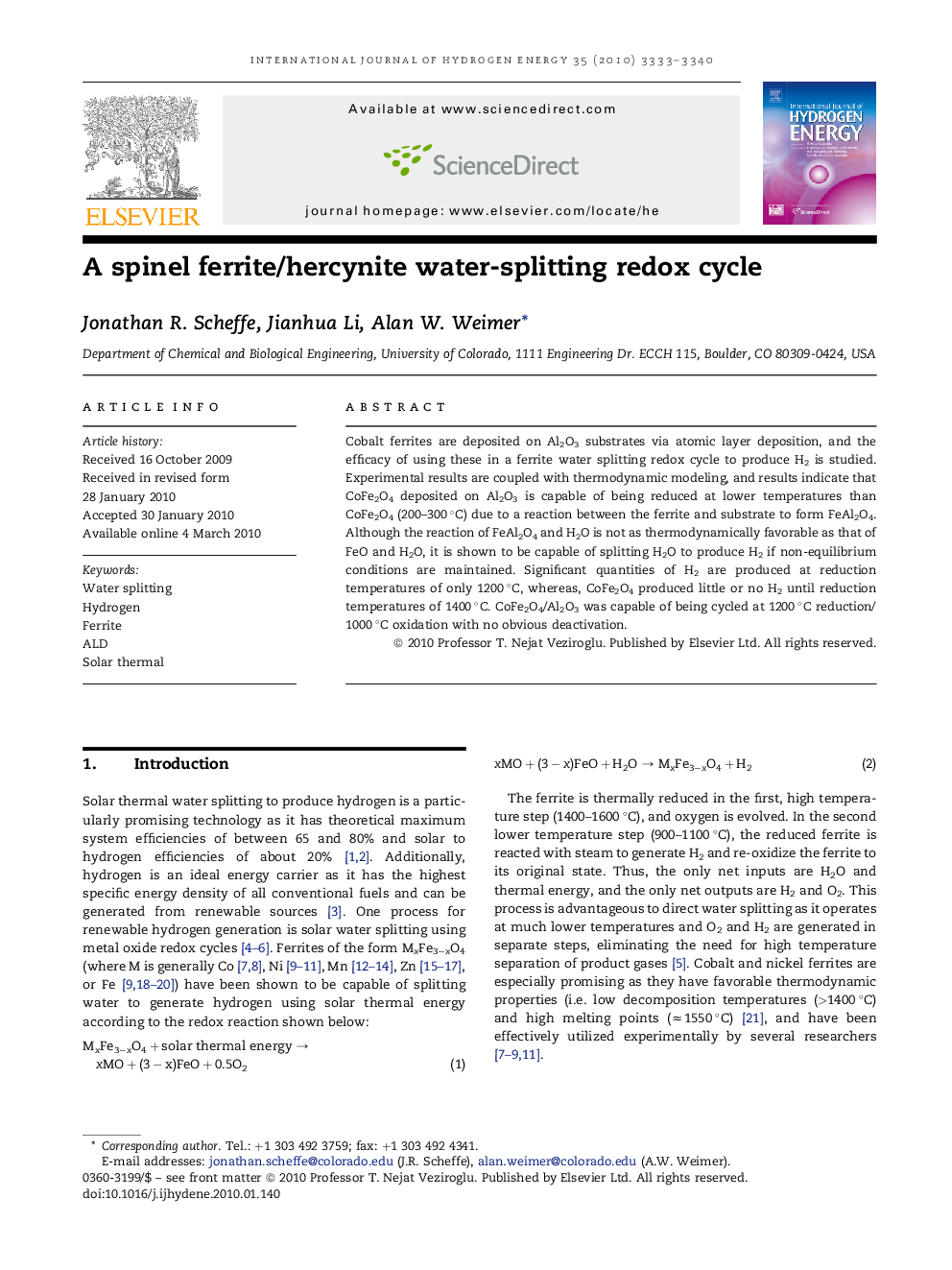| Article ID | Journal | Published Year | Pages | File Type |
|---|---|---|---|---|
| 1282887 | International Journal of Hydrogen Energy | 2010 | 8 Pages |
Cobalt ferrites are deposited on Al2O3 substrates via atomic layer deposition, and the efficacy of using these in a ferrite water splitting redox cycle to produce H2 is studied. Experimental results are coupled with thermodynamic modeling, and results indicate that CoFe2O4 deposited on Al2O3 is capable of being reduced at lower temperatures than CoFe2O4 (200–300 °C) due to a reaction between the ferrite and substrate to form FeAl2O4. Although the reaction of FeAl2O4 and H2O is not as thermodynamically favorable as that of FeO and H2O, it is shown to be capable of splitting H2O to produce H2 if non-equilibrium conditions are maintained. Significant quantities of H2 are produced at reduction temperatures of only 1200 °C, whereas, CoFe2O4 produced little or no H2 until reduction temperatures of 1400 °C. CoFe2O4/Al2O3 was capable of being cycled at 1200 °C reduction/ 1000 °C oxidation with no obvious deactivation.
